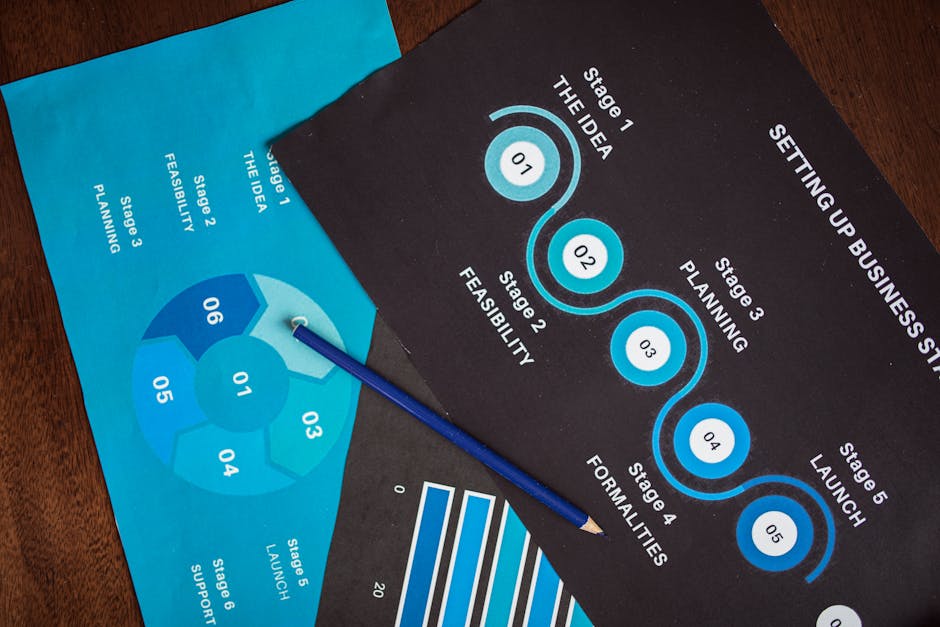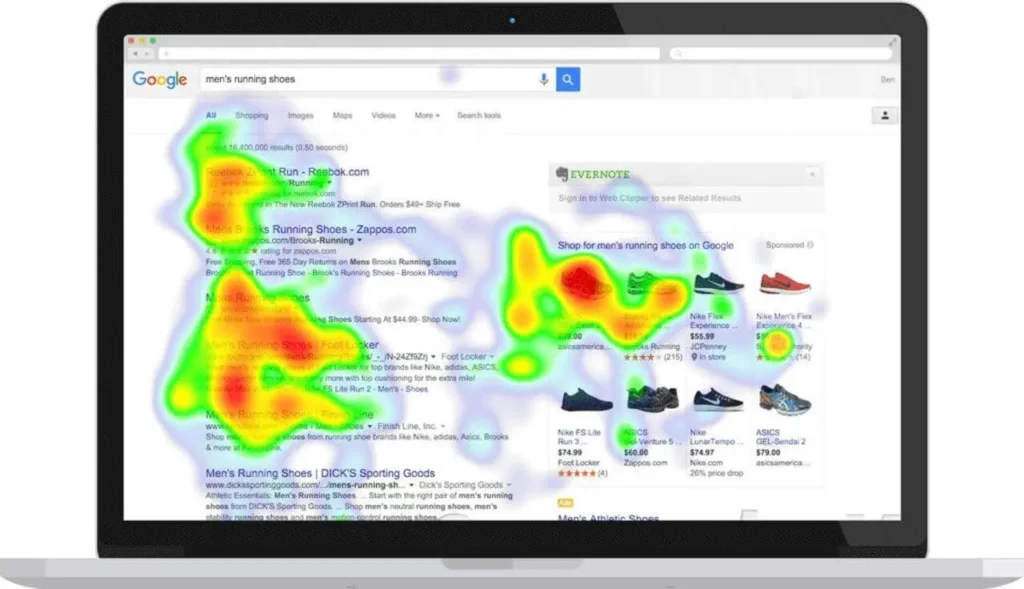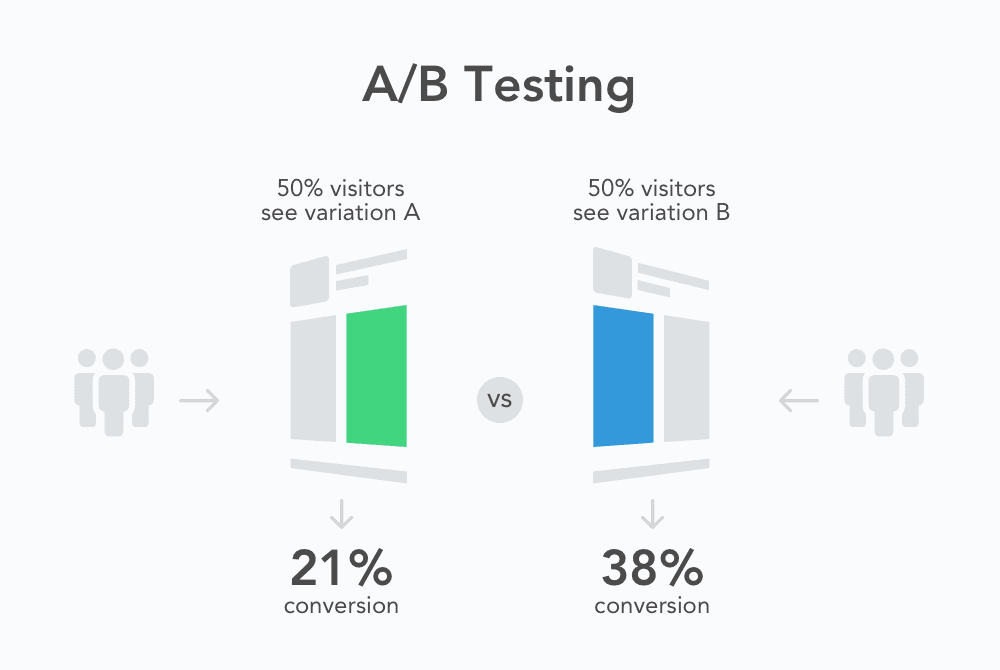Conversion optimization demands a clear purpose and measurable goals to drive revenue and sustainable growth, which is why teams must adopt a systematic approach to testing and analysis. Begin with defining business outcomes and prioritize pipelines by pipeline value and pipeline generation, aligning active focus accounts with future pipeline accounts to match sales velocity and marketing capacity. For example, a SaaS company increased revenue by 18% after mapping account qualification criteria to personalized content and campaigns, demonstrating that is why iterative optimization beats ad-hoc changes. Measure marketing metrics and key performance indicators, and break down marketing ROI decomposition using established marketing formulas to improve return on investment. Use case studies to extract lessons learned and explore tools such as conversion optimization platform for iterative testing to operationalize experiments and embed CRO into product and digital marketing workflows.

Graphical roadmap showing phased CRO implementation with KPIs, experiments, and stakeholder responsibilities
Unpacking the Criticality of Conversion Optimization: Why usage is Key
Understanding why usage patterns correlate with revenue starts with user journey mapping and segment-level analysis; this approach reveals opportunities to increase conversion rate while reducing churn. Practical steps include cohort analysis, funnel visualization, and prioritizing hypotheses that affect pipeline value and sales pipeline velocity. When teams focus on account qualification and active focus accounts, they can convert higher-intent prospects faster and grow future pipeline accounts through targeted nurture streams. Use A/B testing alongside behavioral analytics to quantify marketing ROI decomposition and iterate on campaigns, brand awareness initiatives, and personalized content that moves prospects toward purchase. For smaller teams, leveraging third-party bundles can accelerate capacity; consider resources like affordable AI tools for marketing automation to scale experimentation without large headcount increases.

Dashboard mockup showing funnel conversion improvements and AI-assisted test recommendations with annotations
Essential Digital Marketing Metrics: Why Focus on Foundational Elements First?
Prioritizing foundational digital marketing metrics clarifies which levers move the needle on revenue and lead quality; begin with conversion rate, cost per acquisition, and lifetime value to inform resource allocation. That is why integrating marketing metrics into decision frameworks yields clearer business outcomes and allows teams to decompose marketing ROI decomposition by channel and campaign. Establish key performance indicators tied to revenue goals and complement them with behavioral signals such as session duration and engagement paths. Account-based tactics require personalized content and rigorous account qualification that feed active focus accounts, improving pipeline generation and future pipeline accounts quality. To operationalize, map marketing formulas to campaigns and review weekly to prevent drift.
Layered chart comparing CAC, LTV, conversion rate and supporting channels for decision-making
Why Brisbane Startups Must Prioritize CRO: What For Sustainable Success?
Brisbane startups face unique market dynamics, making CRO a strategic priority to maximize limited budgets and improve revenue per acquisition; local context informs messaging and campaign targeting, which is why localized experiments can outperform generic approaches. Focus on building pipelines through targeted campaigns that increase brand awareness and sales pipeline velocity while optimizing account qualification processes for enterprise prospects. Case studies in regional markets show improved return on investment when teams align marketing metrics with sales incentives and measure pipeline value across cohorts. Invest in tools, talent, and a testing blueprint that captures behavioral data and enables personalized content consistent with market preferences. For hands-on resources, review boutique examples to inspire creative CRO elements and conversion design patterns, such as those curated by Australian boutique conversion design examples, and adapt learnings to your product roadmap and digital marketing calendar.

Visual case study collage showing Brisbane startup conversion test setups and localized messaging experiments
The Evolution of Digital Marketing: Understanding
Digital marketing evolution reflects a shift from broad reach to precision, and why marketers must adopt data-centric tactics to capture revenue and grow sustainable pipelines. Modern strategies combine attribution, predictive scoring, and content personalization to influence pipeline generation and accelerate sales pipeline velocity; this requires teams to measure key performance indicators and update marketing formulas based on observed behavior. Practical implementation includes integrating CRM signals for account qualification, tagging active focus accounts, and creating personalized content tailored to buyer stage. Analytics should inform campaigns and brand awareness efforts, which in turn feed future pipeline accounts through nurtures and retargeting. Organizations that continually refine their marketing ROI decomposition outperform peers because they connect metrics to business outcomes and optimize spend against return on investment.

Timeline infographic depicting digital marketing milestones, attribution models, and personalization tactics over time
Current CRO Trends in Australia: That Is Why Local Context Matters for FullFunnel.io
Australian CRO trends emphasize consent-driven personalization, privacy-first analytics, and conversion-centric landing experiences, and that is why local context matters for conversion outcomes in regional markets. Teams should monitor marketing metrics like conversion rate and sales pipeline velocity while balancing brand awareness with revenue-focused experiments. Use behavioral cohorts and account qualification signals to prioritize active focus accounts and nurture future pipeline accounts with tailored campaigns. Practical examples include A/B tests that changed pricing presentation and improved pipeline value by measurable percentages; documenting these experiments fuels repeatable playbooks. Service providers in the region combine UX research, analytics, and performance engineering to achieve sustained improvements and tie tests to return on investment. Explore workspace and operational setups that support focused experimentation, such as optimized teams and environments highlighted by specialized office solutions for innovation teams, to accelerate CRO adoption and cross-functional collaboration.

Photo showing collaborative testing workspace with whiteboards, user research notes, and analytics screens
Mastering Marketing KPIs: That Is Why Smart Digital Metrics Fuel Growth, not just
Smart digital metrics fuel growth by connecting tactical activities to revenue and strategic objectives; prioritize a balanced scorecard of conversion rate, LTV, CAC, and pipeline value to inform budget allocation. That is why teams should establish dashboards that reflect marketing ROI decomposition and marketing formulas, ensuring campaigns are evaluated by their contribution to business outcomes and return on investment rather than vanity measures. Practical guidance includes implementing account qualification workflows to populate active focus accounts and tracking future pipeline accounts through lead scoring and engagement thresholds. Regularly review marketing metrics at sprint cadence to iterate on experiments, refine personalized content, and quantify sales pipeline velocity improvements. This approach supports sustained revenue growth and clearer prioritization across product, sales, and marketing functions.
KPI dashboard mockup showing conversion, LTV, CAC, pipeline value, and campaign attribution charts
The Foundational Pillars of CRO: Why Are You Overlooking This?
Overlooking foundational CRO pillars—hypothesis-driven testing, robust analytics, and customer-centric design—jeopardizes revenue and slows pipeline generation. Start by auditing funnels to identify bottlenecks, then prioritize tests by expected business outcomes and estimated pipeline value impact. Map active focus accounts and future pipeline accounts to specific tests, and use account qualification thresholds to accelerate high-potential prospects. Integrate marketing ROI decomposition into your experiment prioritization matrix using marketing formulas that estimate potential return on investment per test. Document wins and failures, scale learnings through playbooks, and maintain a steady cadence of campaigns that focus on improving conversion rate and brand awareness simultaneously.

Workflow diagram illustrating CRO pillars: hypothesis, experimentation, measurement, and scaling across teams
Understanding Website Metrics: Why Conversion Rate is Paramount
Conversion rate remains paramount because it directly ties visitor behavior to revenue and can multiply the effectiveness of acquisition channels without additional ad spend. Teams should analyze micro-conversions, funnel drop-off points, and behavioral segments to understand what drives engagement and which actions increase pipeline generation. Employ session duration optimization and reduced bounce through targeted content, and measure improvements via marketing metrics and key performance indicators. Use account qualification signals to prioritize personalized content for active focus accounts and build nurture sequences for future pipeline accounts. When explaining complex concepts, consider the role of 疑问副词 to craft clearer CTAs for multilingual audiences; integrating linguistic nuance improves click-through and conversion outcomes. Empirically validate hypotheses with A/B tests and quantify improvements in pipeline value to inform budgeting and forecast revenue with greater confidence.

Heatmap and funnel visualization showing conversion hotspots and areas of drop-off across landing pages
Key Concepts: Lowering Bounce Rate for Better Engagement
Lowering bounce rate begins with aligning landing page intent to acquisition channel messaging; clarity reduces confusion, increases session duration, and supports stronger revenue outcomes. Conduct message match audits between ad creative and page headlines, and optimize page load and interaction delays because these technical factors affect user experience and conversion. Implement behavioral triggers for personalized content based on referral source and historical engagement to move active focus accounts through the funnel toward account qualification. Measure the impact on pipeline value, and report marketing metrics that reflect both short-term campaign performance and long-term brand awareness. Include A/B tests that vary layout and visual hierarchy to identify improvements and build playbooks for future pipeline accounts.
Side-by-side comparison of landing page versions showing reduced bounce after design and content updates
Important Factors: Optimizing Session Duration for Deeper Interaction
Optimizing session duration requires delivering relevant content quickly and guiding users through meaningful interactions that increase conversion potential and revenue per visitor. Use content scaffolding, progressive disclosure, and contextual CTAs to encourage exploration and reduce bounce, which improves marketing metrics and contributes to stronger business outcomes. Segment experiences for active focus accounts versus anonymous visitors, and tailor personalized content based on behavior and firmographic signals to accelerate pipeline generation. Test multimedia elements, interactive tools, and social proof to measure lift in session duration and correlate gains to pipeline value and conversion rate. Academic resources and practical audits show that incremental improvements in session time often precede measurable changes in sales pipeline velocity.
Illustration of content scaffolding with interactive elements and engagement flow increasing session time
Strategic Analysis of Brisbane Startup CRO: That Is Because Data Matters
Strategic analysis of Brisbane startup CRO shows that data-driven approaches beat intuition because they quantify the impact of tests on revenue and product-market fit. That is because data matters when prioritizing experiments that affect pipeline value, account qualification, and sales pipeline velocity. Conduct segmented funnel analyses and leverage qualitative research to discover friction points; use these signals to design personalized content for high-value cohorts and active focus accounts. Incorporate marketing ROI decomposition into test prioritization to ensure experiments are linked to return on investment and broader business outcomes. Case studies in regional markets often reveal that modest lifts in conversion rate translate to outsized revenue due to concentrated customer lifetime value profiles.

Case study matrix comparing test outcomes, revenue uplift, and cohort behaviors for Brisbane startups
Critical Elements for Marketing KPIs: Identifying Conversion Bottlenecks
Identifying conversion bottlenecks begins with mapping end-to-end user journeys and instrumenting each touchpoint with quantitative and qualitative data. Evaluate conversion funnels across segments and devices, and apply marketing formulas to estimate lost revenue from each bottleneck. Prioritize fixes that improve pipeline value and account qualification for active focus accounts, and design experiments that test hypotheses for future pipeline accounts. Measure marketing metrics such as conversion rate, session duration, and sales pipeline velocity alongside brand awareness indicators to maintain balanced objectives. This disciplined approach uncovers systemic issues—technical, messaging, or UX—that hinder revenue and provides a clear roadmap for campaigns that directly affect business outcomes.
Flowchart displaying funnel stages, identified bottlenecks, and projected revenue recovery estimates
Best Practices: Leveraging Digital Metrics for Actionable Insights
Leverage digital metrics by creating automated reports that translate raw data into actionable insights for product, marketing, and sales teams; ensure reports highlight key performance indicators, pipeline value, and forecasted revenue impacts. Implement guardrails that require experiments to estimate marketing ROI decomposition before execution, and train teams on marketing formulas for consistent evaluation. Use segmentation to tailor personalized content and run campaigns aimed at both brand awareness and direct conversion, balancing short-term revenue with long-term pipeline generation. Encourage cross-functional reviews of active focus accounts to refine account qualification criteria and nurture future pipeline accounts through relevant content and offers.
Automated reporting dashboard displaying segmented KPIs, test outcomes, and forecasted pipeline improvements
Current CRO Trends in Australia: That Is Why Local Context Matters for FullFunnel.io
A blueprint standardizes experimentation, scales learning, and preserves institutional knowledge so revenue gains are repeatable and measurable. Why have a blueprint? Because repeatability accelerates pipeline generation, improves account qualification outcomes, and clarifies responsibilities among product, marketing, and analytics teams. A robust blueprint includes hypothesis templates, prioritization matrices tied to pipeline value, and playbooks for personalized content targeted at active focus accounts and future pipeline accounts. Include marketing ROI decomposition steps and marketing formulas to estimate impact prior to launch, and record key performance indicators to monitor progress against business outcomes. Practical blueprints also document required datasets, instrumentation needs, and experiment cadence, ensuring consistent execution and faster return on investment.

Blueprint template image showing experiment lifecycle, stakeholders, and expected KPI improvements after deployment
Mastering Marketing KPIs: That Is Why Smart Digital Metrics Fuel Growth, not just
To boost conversion rate today, start with quick wins: optimize headlines for intent match, reduce form fields to essential account qualification inputs, and deploy urgency or social proof elements that resonate with target cohorts. Run prioritized A/B tests with clear success metrics and estimate impact on pipeline value and revenue using simple marketing formulas. Target active focus accounts with personalized content while setting up nurture flows for future pipeline accounts; track marketing metrics and key performance indicators continuously to validate progress. Use sessions of rapid experimentation to build confidence, iterate on winning variants, and scale changes that demonstrably improve sales pipeline velocity and return on investment. Operationalize learnings into playbooks so teams can replicate success across campaigns and channels.
Step-by-step checklist for quick CRO wins including headline tests, reduced fields, and targeted social proof
The Foundational Pillars of CRO: Why Are You Overlooking This?
Reducing bounce rate effectively begins by analyzing entry pages for intent mismatch, page speed, and clarity of value proposition; implement prioritized fixes and test iteratively. Use personalized content for high-intent cohorts, and ensure that CTAs align with the user’s session source to maintain continuity. Apply account qualification logic to surface tailored experiences to active focus accounts, and measure effects on pipeline value post-launch. Include technical optimizations—image compression, lazy loading, and server response improvements—to minimize abandonment from poor performance. Track marketing metrics and attribute changes to campaigns so teams can report clear business outcomes and calculate return on investment for each optimization effort.
Technical checklist image showing page speed improvements, content alignment steps, and measurement plan for bounce reduction
Common Challenges: Overcoming Obstacles to Longer Session Duration
Extending session duration faces challenges such as misaligned content, complex navigation, and irrelevant recommendations; overcome these by simplifying content pathways and surfacing progressive disclosure that respects user intent. Create personalized content inventories and use behavioral triggers to introduce deeper resources when relevance signals align, improving engagement and pipeline generation. Address technical friction, such as slow resources or intrusive interstitials, and evaluate their impact on session duration via marketing metrics and key performance indicators. Train content teams on A/B testing patterns and marketing formulas so experiments are designed to influence revenue and future pipeline accounts. Cross-functional collaboration helps identify account qualification thresholds that trigger richer experiences for active focus accounts, balancing long-term brand awareness with immediate conversion potential.

Diagram illustrating content recommendation flow and triggers that extend session duration while reducing friction
Advanced Digital Marketing Techniques: FullFunnel.io’s Expert Approach
FullFunnel.io’s expert approach combines machine learning, rigorous attribution, and human-centered design to improve conversion rate and revenue outcomes simultaneously. Their playbooks integrate marketing ROI decomposition and marketing formulas to prioritize tests by expected pipeline value, enabling teams to focus on active focus accounts and future pipeline accounts with personalized content and tailored channels. They emphasize account qualification rules that feed sales efficiently and maintain clear key performance indicators tied to business outcomes and return on investment. For inspiration across industries, consider experiential examples like targeted travel promotions that uplift conversion; specialized services such as curated island itineraries illustrate how niche offers convert when paired with the right messaging, as seen at Galapagos island hopping itinerary examples.

Illustration of algorithmic attribution model combined with UX improvements driving measurable conversion uplift
Expert Tips: Elevating Marketing KPIs with Precision
Elevate marketing KPIs by focusing on measurement precision, attribution clarity, and experiment hygiene. Adopt instrumentation standards to ensure that conversion events, cohort identifiers, and revenue attributions are reliable. Use marketing ROI decomposition to estimate potential impact before launching campaigns, and apply marketing formulas to compute expected return on investment for prioritized tests. Coordinate account qualification metrics with sales to expedite active focus accounts and to better assess the value of future pipeline accounts. Regularly audit datasets for drift and implement guardrails to prevent misinterpretation of marketing metrics and key performance indicators. These actions reduce risk, improve campaign efficiency, and align teams around measurable business outcomes.

Diagram of KPI elevation process showing instrumentation, decomposition, and cross-functional alignment steps
Optimization Strategies: Why usage of A/B Testing is Crucial
A/B testing remains a cornerstone strategy because it isolates variables and provides causal evidence that changes drive revenue, which is why rigorous experimental design is crucial. Define hypotheses tied to pipeline value and business outcomes, and estimate impact using marketing formulas to prioritize tests. Apply A/B testing to headlines, pricing displays, and form flows that affect account qualification and conversion rate; segment results by active focus accounts and future pipeline accounts to uncover nuanced effects. Maintain test hygiene by ensuring adequate sample sizes and pre-registered analysis plans to protect marketing ROI decomposition and ensure credible key performance indicators. Incorporate multivariate and sequential testing for complex interactions, and translate winning variants into scalable campaigns that improve sales pipeline velocity.

Statistical flowchart showing A/B testing lifecycle, sample size calculations, and decision thresholds for implementation
Real-World Impact: Why Digital Metrics Drive Success
Digital metrics drive success because they connect tactical experiments to measurable revenue outcomes and help prioritize investments with the highest return on investment. Teams should tie marketing metrics such as conversion rate, LTV, and pipeline value to business outcomes and use marketing ROI decomposition to explain changes in performance. When campaigns are analyzed with rigor, teams can identify which channels enhance brand awareness while contributing to pipeline generation. Translating metrics into narrative insights enables stakeholders to understand why certain initiatives matter and to support continuation or scaling. For distributed teams, documented playbooks and shared dashboards maintain consistency in evaluation and accelerate learning across product lines.
Case visualization linking metric improvements to revenue uplift and illustrating stakeholder reporting flows
Understanding Website Metrics: Why Conversion Rate is Paramount
Startups mastering conversion rate optimization often combine rapid experimentation with strong product-market fit and disciplined measurement, resulting in outsized revenue growth relative to spend. Examples include niche e-commerce brands that improved conversion rate by 25% through checkout simplification and B2B software firms that increased pipeline value by refining account qualification and personalized content for enterprise prospects. These successes highlight the importance of integrating marketing metrics and key performance indicators into daily workflows and of committing to marketing ROI decomposition to understand long-term return on investment. For inspiration, look at product-focused creative solutions and UX-first storefronts as practical references when designing tests. For novelty product examples and micro-conversions, consider how tactile items like the interactive Infinity Cube fidget toy product use design details to increase perceived value and conversion.

Collage showing startup teams implementing CRO, split-test screenshots, and conversion improvements across industries
Key Concepts: Lowering Bounce Rate for Better Engagement
Avoiding high bounce rate pitfalls requires identifying mismatches between user intent and page content, and addressing technical issues that cause abandonment. Common mistakes include overloading pages with promotional elements, misaligned ad creative, and slow page performance. Implement user research to understand session intent and correct content pathways, and run focused A/B tests to validate hypotheses before wide rollout. Capture marketing metrics that reveal segment-specific behavior and refine account qualification to ensure that active focus accounts receive prioritized experiences. Track how changes influence pipeline value and document both failures and wins in shared repositories to accelerate team learning.

Visual list of common bounce causes with remediation steps and sample metrics before versus after fixes
Important Factors: Optimizing Session Duration for Deeper Interaction
Adaptive strategy is essential because market dynamics, privacy regulations, and technology trends evolve rapidly, and static playbooks become obsolete; adaptive teams continuously recalibrate experiments to protect revenue and pipeline health. Build mechanisms for ongoing learning, including automated alerts for metric drift and scheduled hypothesis refreshes tied to marketing metrics and key performance indicators. Invest in predictive models to anticipate shifts in session duration and conversion propensity, and emphasize flexible account qualification rules for active focus accounts as buyer behaviors change. This agility helps sustain brand awareness while preserving return on investment across campaigns.
Flow diagram showing adaptive strategy loops, alerts, and model retraining cadence for CRO teams
Emerging Developments: Predictive Analytics for Session Duration
Predictive analytics for session duration leverages behavioral signals, content taxonomy, and contextual data to forecast engagement and prioritize content investments that drive revenue. Use models to identify users likely to convert with longer sessions and route them to richer experiences, improving pipeline generation and conversion rate. Combine these predictions with account qualification signals to surface personalized content for active focus accounts and to nurture future pipeline accounts more effectively. Validate models against marketing metrics and key performance indicators, and incorporate marketing ROI decomposition to ensure investments in content and features yield measurable return on investment. Practical examples show predictive nudges increasing session duration by measurable percentages and contributing to higher pipeline value.

Predictive model schematic showing inputs, feature importance, and expected session duration lift across segments
Predictions: The Next Frontier for Marketing KPIs and Digital Metrics
The next frontier for marketing KPIs involves a tighter coupling of predictive signals, experiment outcomes, and business forecasting to give stakeholders clearer expectations for revenue and growth. Predictions will expand the role of marketing ROI decomposition and marketing formulas in planning cycles, enabling teams to simulate campaigns’ impact on pipeline value and sales pipeline velocity. Key performance indicators will increasingly incorporate leading indicators tied to engagement and intent, rather than lagging conversion numbers alone. This shift helps teams ask why certain trends emerge and adapt campaigns to protect return on investment while sustaining brand awareness and long-term customer value.
Futuristic dashboard mockup combining predictive KPIs, scenario simulations, and channel impact projections
Your Path Forward: Why This CRO Post Is Essential for Digital Marketing
This CRO post synthesizes practical frameworks, metrics, and tactical guidance to clarify why conversion optimization should be central to digital marketing strategies focused on revenue growth. It outlines steps to improve pipeline generation, refine account qualification, and implement experiments that enhance pipeline value and sales pipeline velocity. The guidance includes establishing key performance indicators and marketing ROI decomposition methods, and emphasizes continuous learning through A/B testing and predictive analytics. If teams adopt these approaches, they can translate marketing metrics into clear business outcomes and achieve higher return on investment across campaigns. Consider practical resources and partner examples to accelerate adoption and institutionalize CRO within your organization’s operating model.

Strategic roadmap illustration showing milestones from initial audit to scaled CRO program and measurable revenue improvements
Final Thoughts: That Is Why FullFunnel.io Recommends CRO First for Brisbane Startups
Final thoughts emphasize that CRO-first strategies deliver faster, more measurable revenue improvements, which is why FullFunnel.io recommends prioritizing conversion work in Brisbane’s competitive landscape. Tailored experiments can increase pipeline value and improve sales pipeline velocity while preserving brand awareness and long-term growth. Focus on account qualification, personalized content, and clear marketing metrics to align teams around measurable business outcomes. Document marketing ROI decomposition and use marketing formulas to make investment decisions transparent and repeatable. With disciplined experimentation and local market insights, startups can scale efficiently and defend margins while increasing return on investment. For operational inspiration and creative workspaces that enable collaboration, examine examples from curated design and office specialists such as commercial office solutions for creative teams.

Photo showing collaborative workshop in Brisbane with teams planning CRO experiments and strategy
If you found this article helpful, contact us for a FREE CRO Audit















